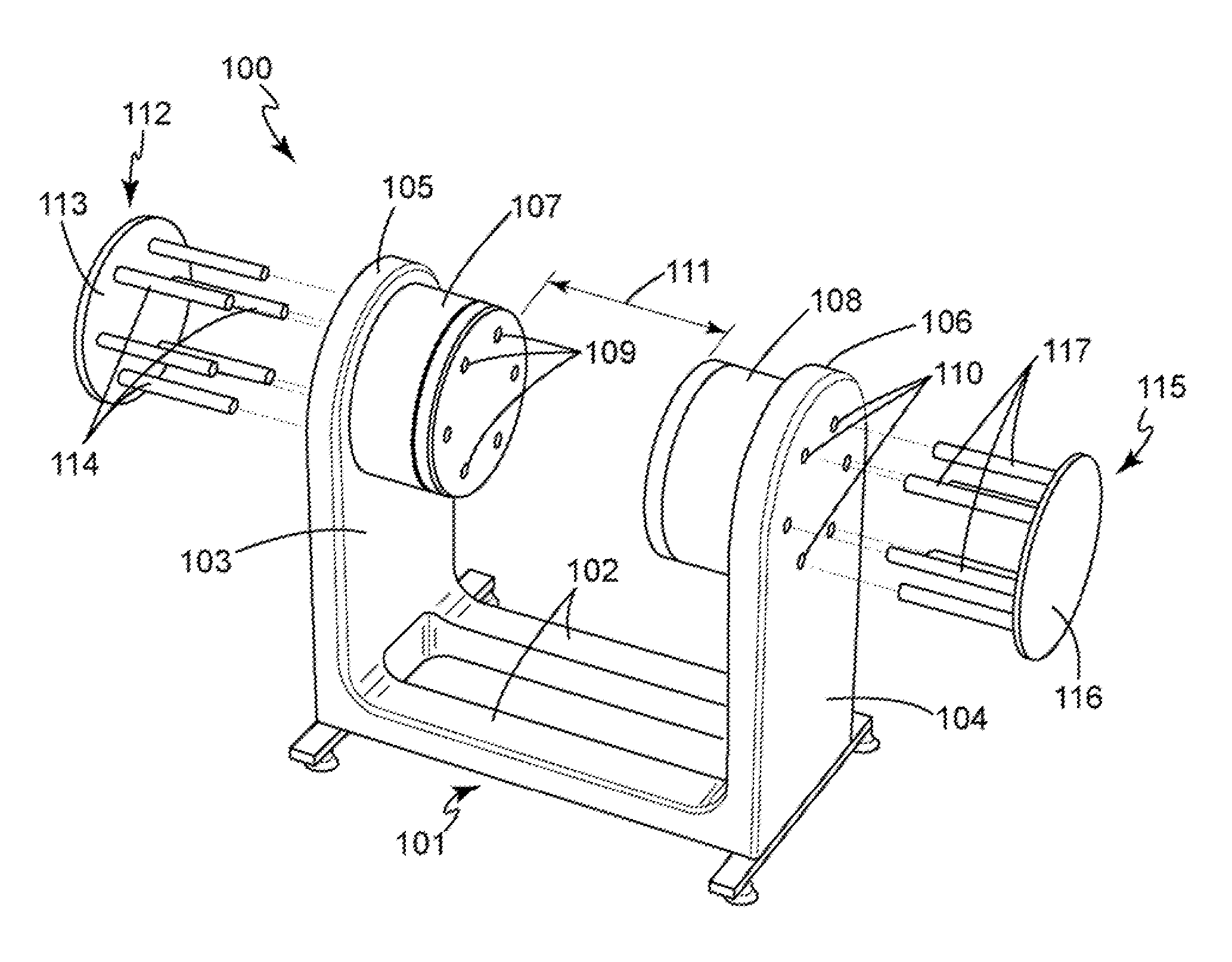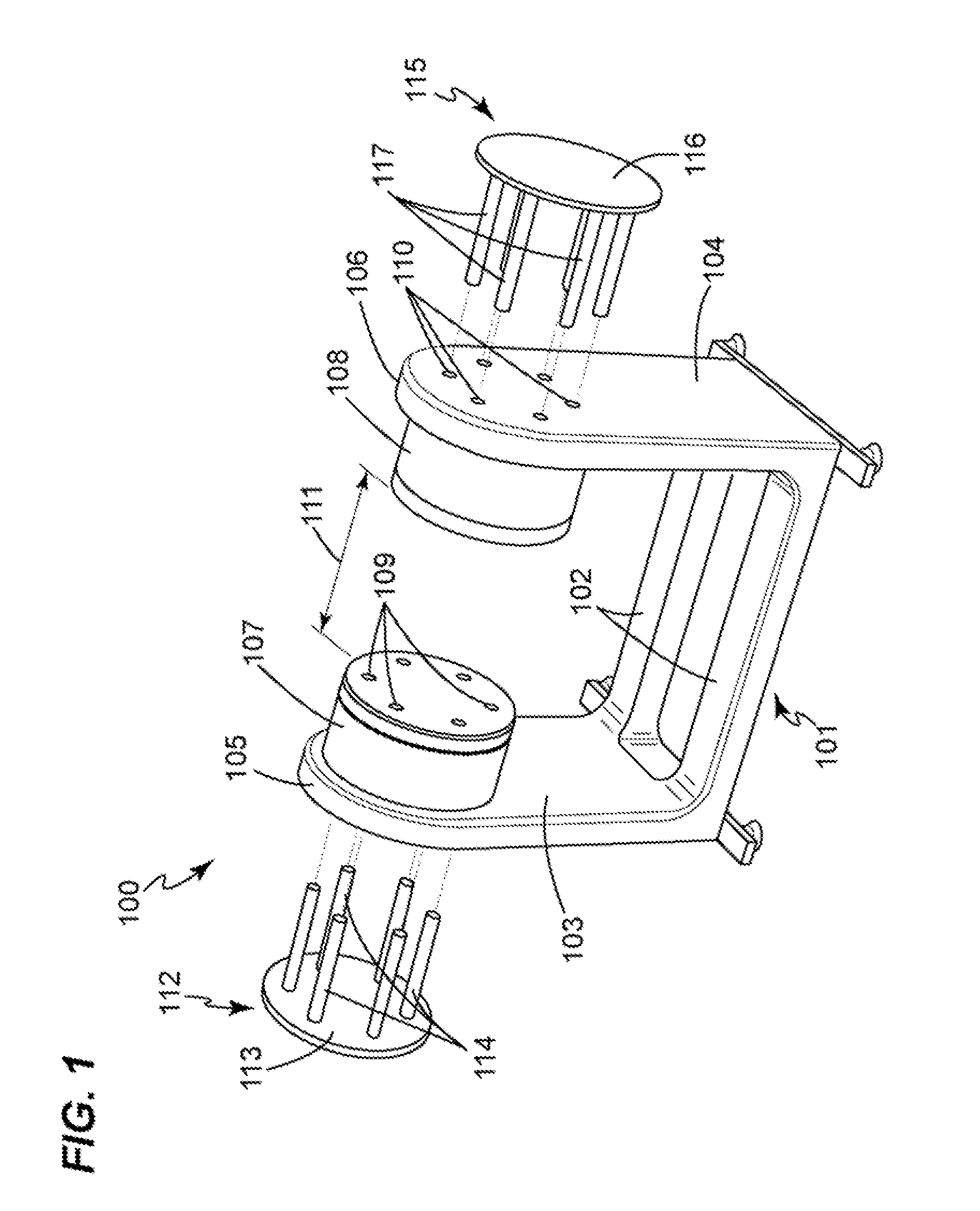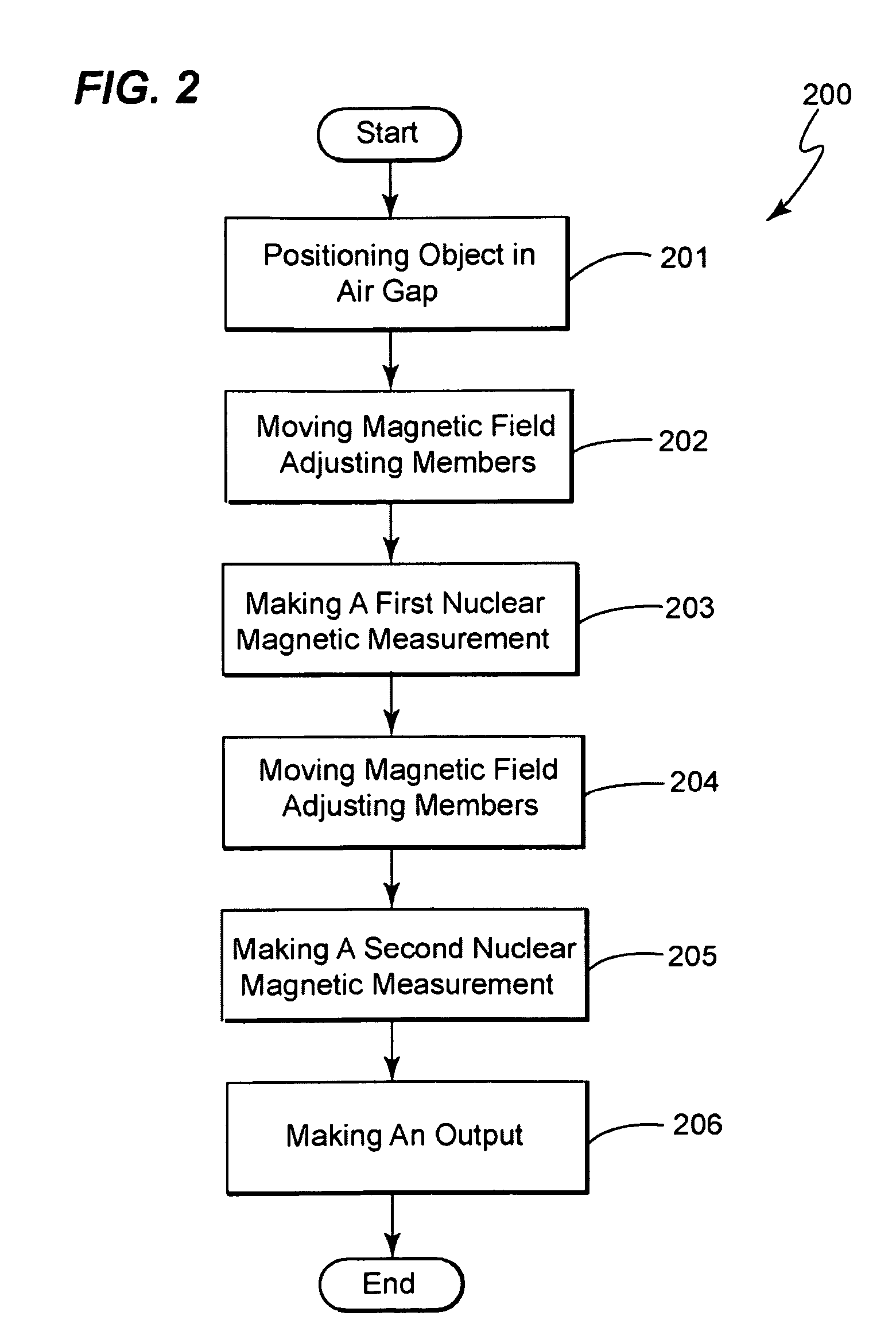Apparatus and method for varying magnetic field strength in magnetic resonance measurements
a magnetic resonance and apparatus technology, applied in the field of apparatus and methods for varying field strength in a magnetic resonance system, can solve the problems of liver biopsy, high invasiveness and pain of liver biopsy, and achieve the effects of uniform magnetic field distribution, and varying magnetic field strength
- Summary
- Abstract
- Description
- Claims
- Application Information
AI Technical Summary
Benefits of technology
Problems solved by technology
Method used
Image
Examples
Embodiment Construction
[0018]Magnetic resonance is a technique of radio-frequency (RF) spectroscopy, where the specimen is exposed to a static magnetic field. This field generates a net magnetization (the vector sum of individual nuclear moments) that causes the relevant nuclei in the specimen (e.g., photons from hydrogen, in the case of a human body) to precess about the static magnetic field. The frequency of the precession depends on the applied static magnetic field and the gyro-magnetic ratio of the nucleus, and is known as the Larmour frequency. An externally applied pulse of RF magnetic field at the Larmour frequency causes the net magnetization to tip away from its equilibrium position to a plane that is transverse to the applied static field. Once the RF pulse is removed, the net magnetization begins to slowly (relatively speaking) return to its equilibrium position about the static magnetic field, and in doing so, releases stored up energy in the form of a signal called free induction decay (“FI...
PUM
| Property | Measurement | Unit |
|---|---|---|
| magnetic field | aaaaa | aaaaa |
| diameter | aaaaa | aaaaa |
| weight | aaaaa | aaaaa |
Abstract
Description
Claims
Application Information
 Login to View More
Login to View More - R&D
- Intellectual Property
- Life Sciences
- Materials
- Tech Scout
- Unparalleled Data Quality
- Higher Quality Content
- 60% Fewer Hallucinations
Browse by: Latest US Patents, China's latest patents, Technical Efficacy Thesaurus, Application Domain, Technology Topic, Popular Technical Reports.
© 2025 PatSnap. All rights reserved.Legal|Privacy policy|Modern Slavery Act Transparency Statement|Sitemap|About US| Contact US: help@patsnap.com



